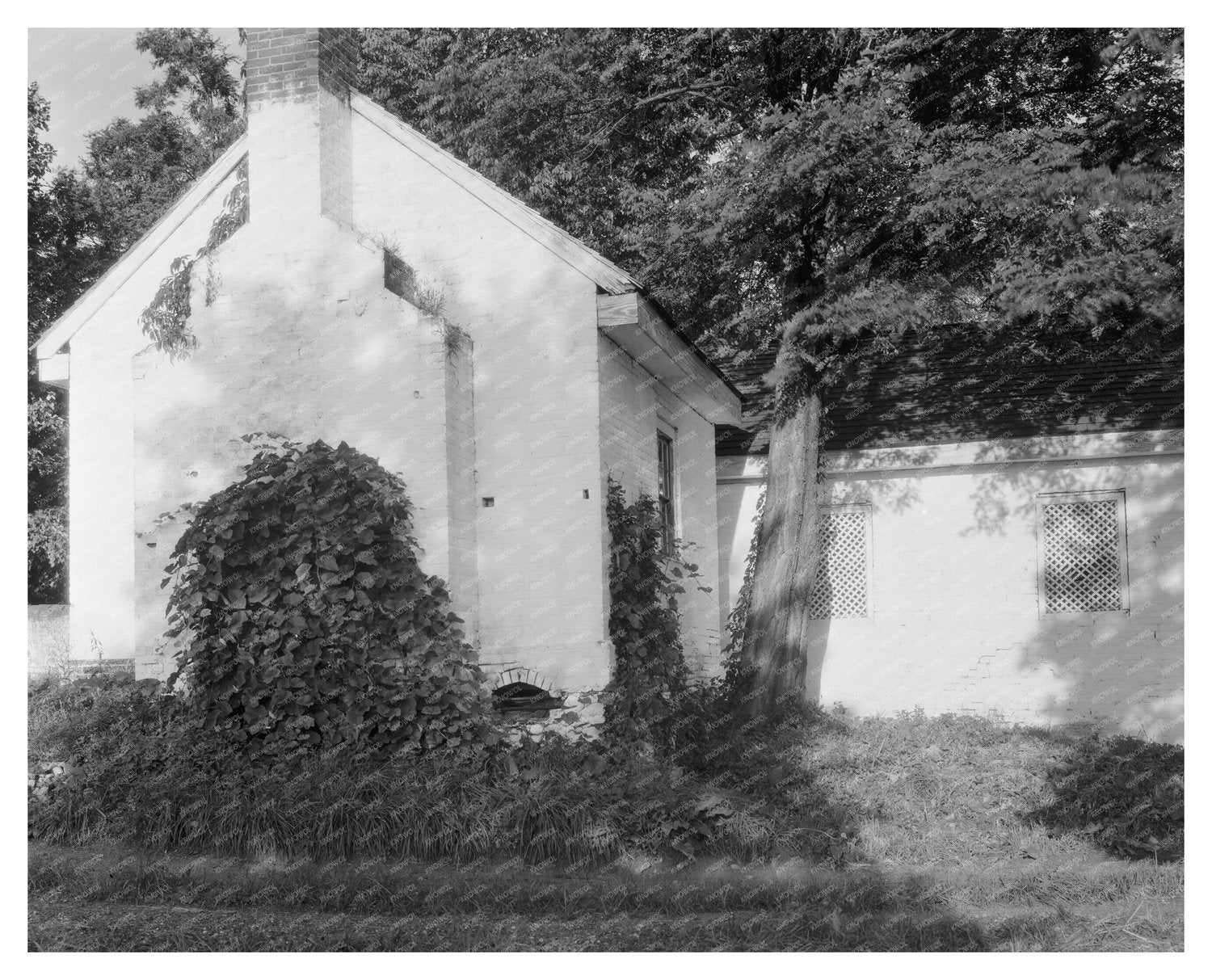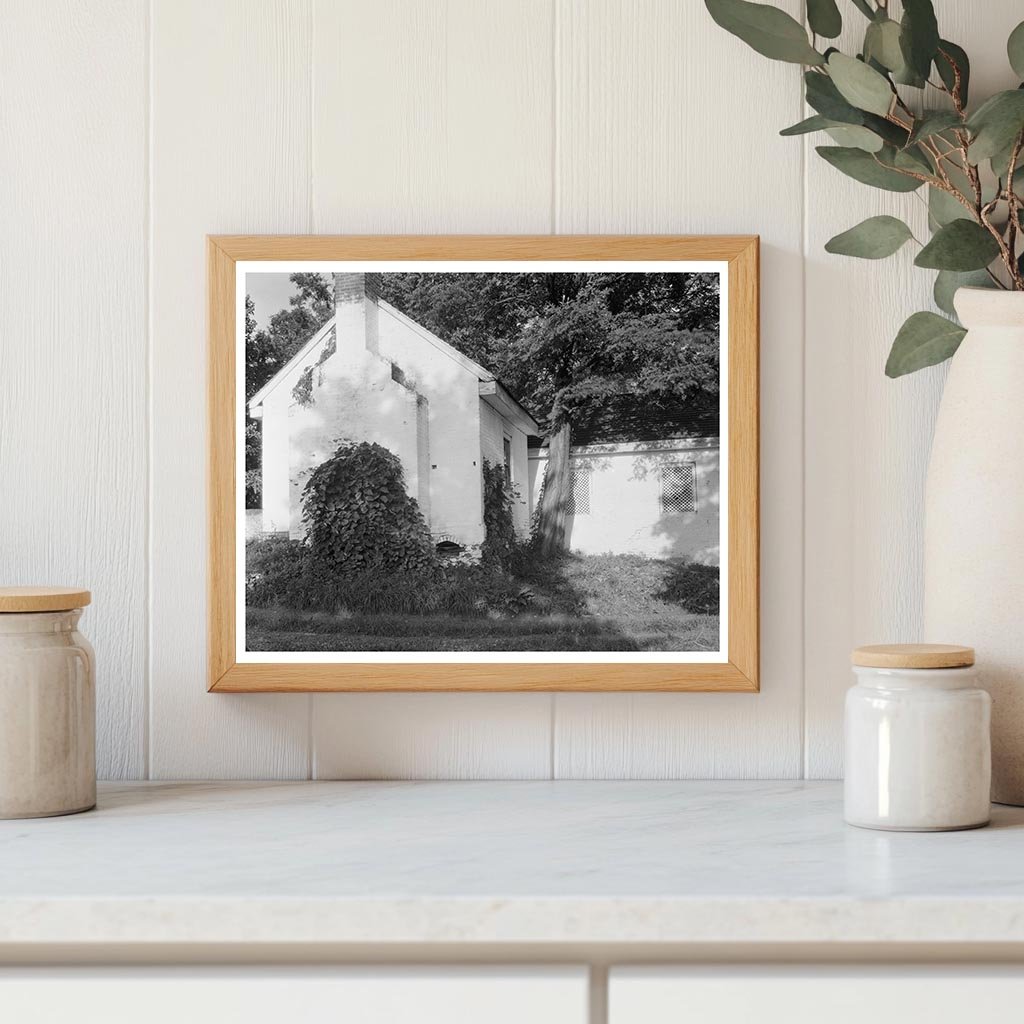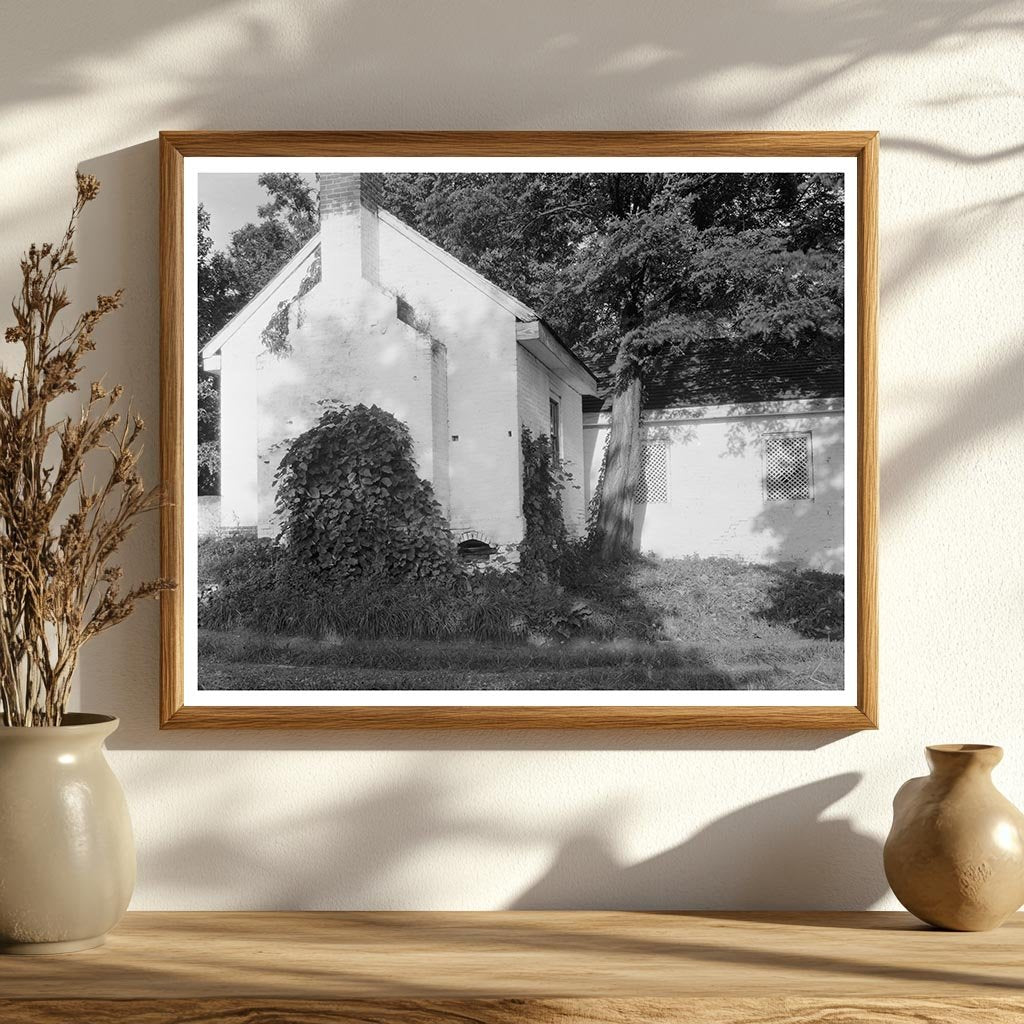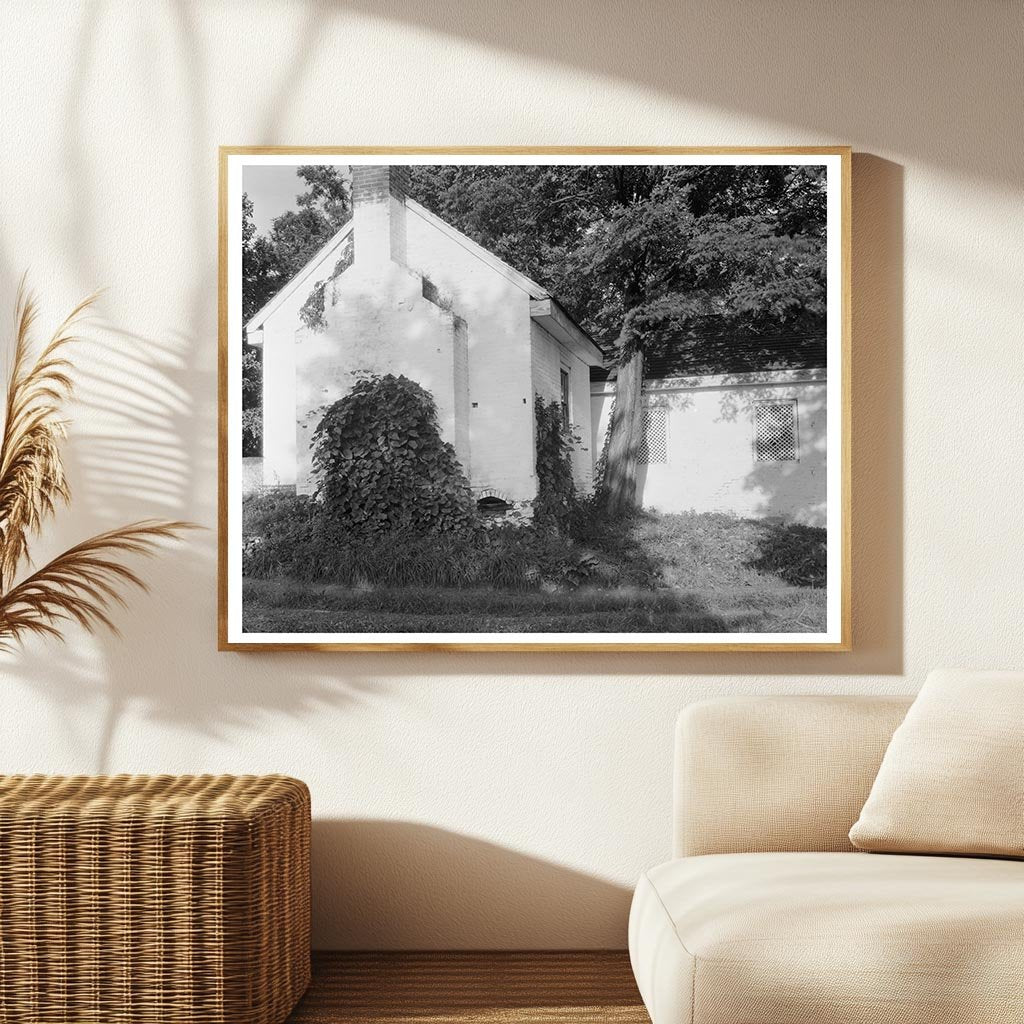



Historic Ulm Estate, Owings Mills, MD, 1725 Photo
This vintage photograph captures a historic building in Owings Mills, Maryland, known as Ulm, dating back to approximately 1725. The structure showcases notable architectural features, including a prominent stone chimney, which reflects the traditional hospitality associated with Maryland country estates. The estate encompasses a mansion, a mill, living quarters, a spring house, and expansive barns.
The photo illustrates the intricate brickwork and the natural overgrowth of vines that envelop the building, highlighting the relationship between the architecture and its rural setting. This image is part of the Carnegie Survey of the Architecture of the South, which documents significant historical structures throughout the region.
Frances Benjamin Johnston, an influential photographer, captured this image as part of her extensive work in documenting American architecture. The photograph is a valuable artifact for those interested in Marylands architectural history and the evolution of country estates in the early 18th century.

Historic Ulm Estate, Owings Mills, MD, 1725 Photo
